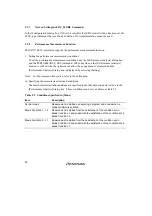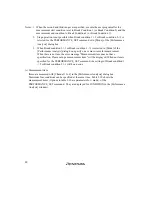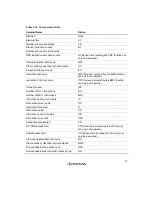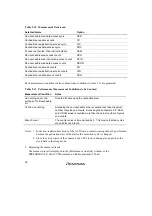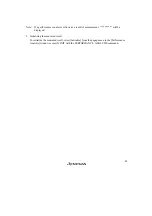
18
2.2.2
Break Condition Functions
In addition to BREAKPOINT functions, the emulator has Break Condition functions. Three types
of conditions can be set under Break Condition 1, 2, 3. Table 2.4 lists these conditions of Break
Condition.
Table 2.4 Types of Break Conditions
Break Condition Type
Description
Address bus condition (Address)
Breaks when the SH7710 address bus value or the program
counter value matches the specified value.
Data bus condition (Data)
Breaks when the SH7710 data bus value matches the
specified value. Byte, word, or longword can be specified as
the access data size.
X-Bus or Y-Bus condition (Address
and data)
Breaks when the X-Bus or Y-Bus address bus or data bus
matches the specified value.
Bus state condition
(Bus State)
There are two bus state condition settings:
Read/Write condition: Breaks when the SH7710 RD or
RDWR signal level matches the specified condition.
Bus state condition: Breaks when the operating state in an
SH7710 bus cycle matches the specified condition.
Types of buses that can be specified are listed below.
•
L-bus (CPU-ALL): Indicates an instruction fetch and data
access, including a hit to the cache memory.
•
L-bus (CPU-Data): Indicates a data access by the CPU,
including a hit to the cache memory.
•
I-bus (CPU.DMA): Indicates a CPU cycle when the
cache memory is not hit, and a data access by the
DMA.
Internal I/O break condition
Breaks when the SH7710 accesses the internal I/O.
LDTLB instruction break condition
Breaks when the SH7710 executes the LDTLB instruction.
Count
Breaks when the conditions set are satisfied the specified
number of times.
Note: When X/Y-RAM is accessed from the P0 space, the I-bus must be selected, and when
accessed from the P2 space, the L-bus must be selected. When cache fill cycle is acquired,
the I-bus must be selected.

























